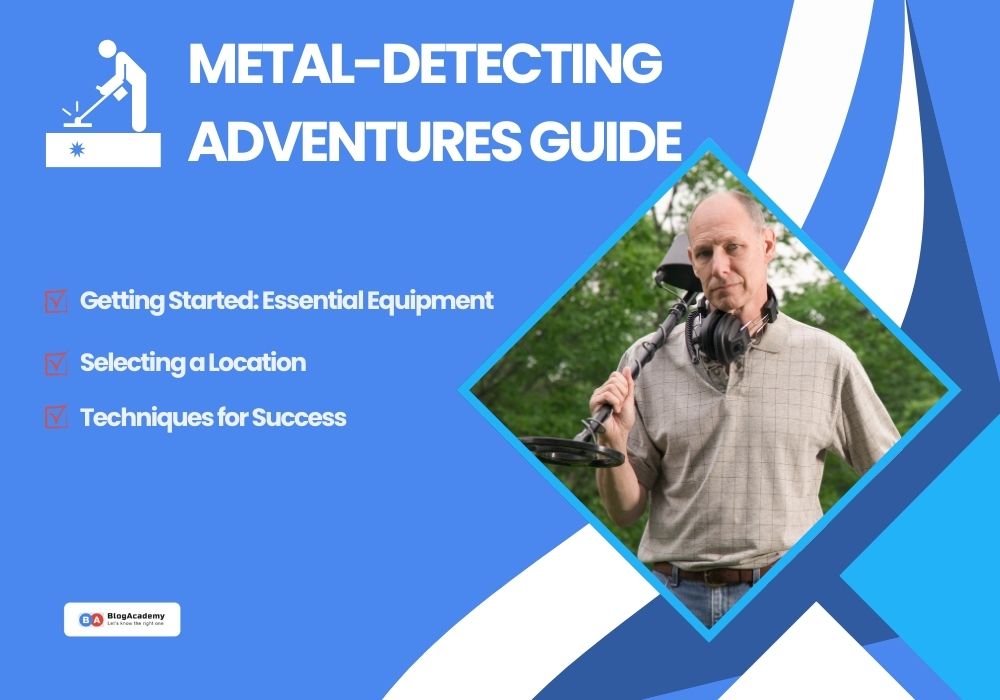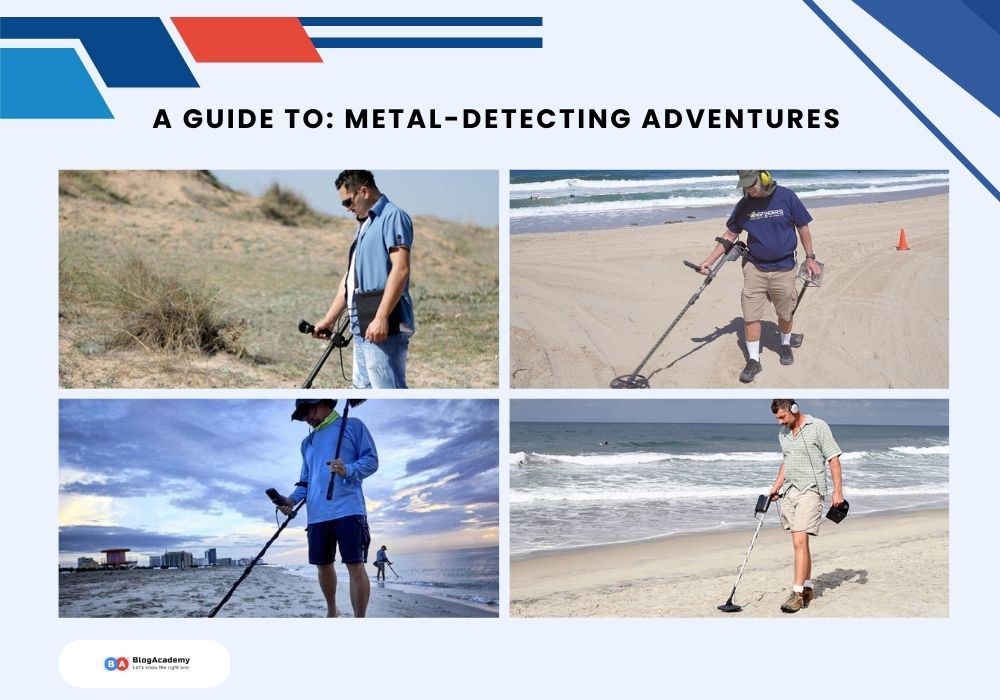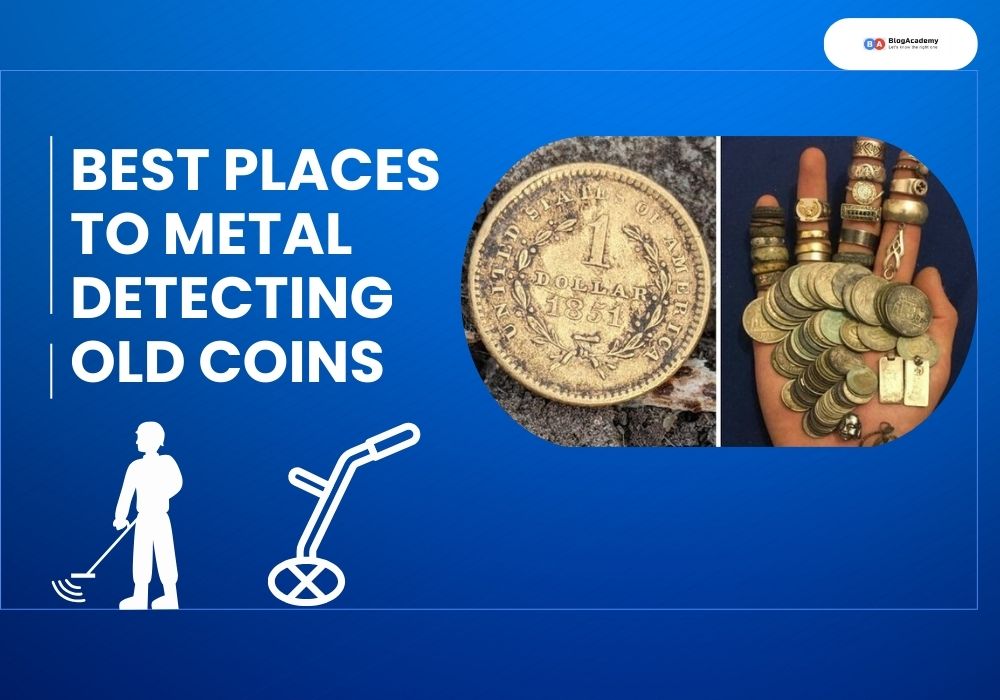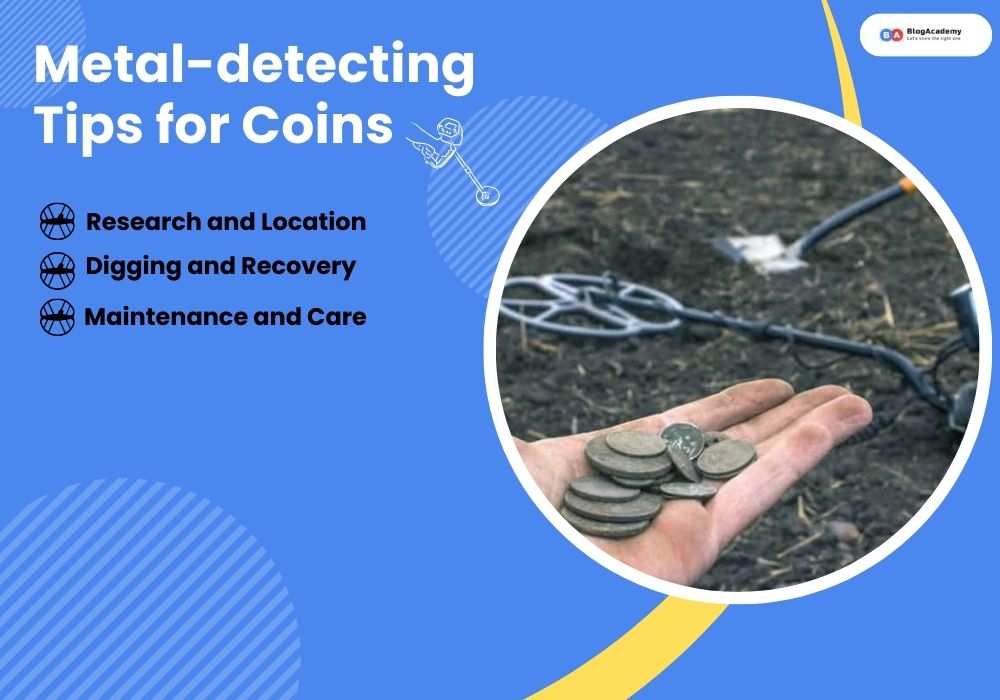Embarking on metal-detecting adventures uncovers hidden treasures from the past. Metal detecting is more than just a hobby; it’s a gateway to uncovering hidden treasures and pieces of history buried beneath the surface. Whether you’re a seasoned detectorist or just starting, embarking on metal detecting adventures can be an exhilarating experience.
In this guide, we’ll delve into the world of metal detecting, offering tips, techniques, and real-life examples to enhance your explorations.
Understanding Metal Detectors
Metal detectors come in various types, each suited for specific purposes. VLF (Very Low Frequency) detectors are ideal for detecting coins, jewelry, and relics in relatively shallow depths. PI (Pulse Induction) detectors, on the other hand, are better at detecting deeper targets and perform well in highly mineralized soil, making them suitable for beach hunting or relic hunting in challenging terrains.
Let’s Unveil Hidden Treasures, with a Guide to Metal-Detecting Adventures now:

Getting Started: Essential Equipment
Before setting out on your metal-detecting adventures, it’s crucial to have the right tools. Here’s a breakdown of essential equipment:
- Metal Detector: Choose a detector suited to your needs—consider factors like target area (beach, land, etc.), experience level, and budget. Brands like Minelab, Garrett, and Fisher offer various models catering to different preferences.
- Coil Covers and Accessories: Coil covers protect your detector’s coil from scratches and damage, while accessories like pinpointers help precisely locate targets.
- Digging Tools: Invest in a sturdy digging tool, such as a shovel or trowel, to unearth your finds carefully.
Selecting a Location
Where you detect significantly impacts your discoveries. Here are some popular locations:
- Beaches: Tourist spots and historical beaches are prime locations due to the continuous turnover of sand, revealing new finds.
- Parks and Fields: Local parks, playgrounds, and fields often hold historical artifacts, lost coins, or jewelry.
- Historical Sites: Research and seek permission to detect historical sites like old homesteads, battlefields, or abandoned settlements.
Techniques for Success
Metal detecting isn’t just about waving a detector around; it requires skill and technique:
- Swinging Technique: Maintain a consistent and steady swinging motion with your detector, ensuring proper ground coverage without missing potential targets.
- Grid Patterns: Search in a grid pattern to cover the area systematically, preventing overlapping or missed spots.
- Target Identification: Learn the sounds and signals your detector emits for different metals, and use a discrimination feature to filter unwanted targets.
Real-Life Metal-Detecting Adventures
To illustrate the excitement and discoveries awaiting detectorists, here are two real-life stories:
Story 1: The Lost Ring
Sarah, an amateur detectorist, ventured to a local beach known for its history. While scanning the shoreline, her detector signaled a strong signal. Using her pinpointer, she located a ring buried beneath the sand. After gently digging, she uncovered a beautiful gold ring with intricate engravings—a lost treasure reclaimed after years buried in the sand.
Story 2: Civil War Relics
Mark, an experienced detectorist fascinated by history, obtained permission to detect on a Civil War battlefield. His research paid off when his detector picked up signals indicating relics from the era. Carefully digging, he unearthed musket balls, buttons from soldier uniforms, and even a well-preserved belt buckle—each item telling a story of the battlefield’s past.
Ethical Metal-Detecting Practices
Responsible detecting ensures preservation and respect for historical sites and the environment:
- Seek Permission: Always obtain permission before detecting private property or historical sites.
- Leave No Trace: Fill in any holes you dig and dispose of trash properly.
- Respect Regulations: Adhere to local laws and regulations regarding metal detecting in public areas.
Examples of Metal-Detecting Adventures
Beach Treasures:
Imagine strolling along a serene beach, listening to the rhythmic waves while your metal detector beeps, signaling a discovery. Beaches are popular hunting grounds for detectorists. The ebb and flow of the tides bring new items to the surface. From lost jewelry to ancient coins washed ashore, beaches offer an array of treasures waiting to be found.
Historical Sites and Fields
Exploring historical sites or fields can unveil relics from bygone eras. Whether it’s an old battlefield or a site of historical significance, each dig could uncover artifacts that tell a story of the past. From Civil War buttons to ancient Roman coins, these sites hold the potential for remarkable discoveries.
Conclusions
Metal detecting is more than just a hobby; it’s a journey through time, unearthing fragments of history and untold stories. With the right equipment, knowledge, and respect for the past, embarking on a metal-detecting adventure can be an enriching experience. After hours of searching, the metal-detecting adventures unearthed a trove of ancient coins buried beneath the soil.
So, grab your detector, explore new locations, and let the thrill of discovery guide you on your next adventure into the unknown depths of the past!



